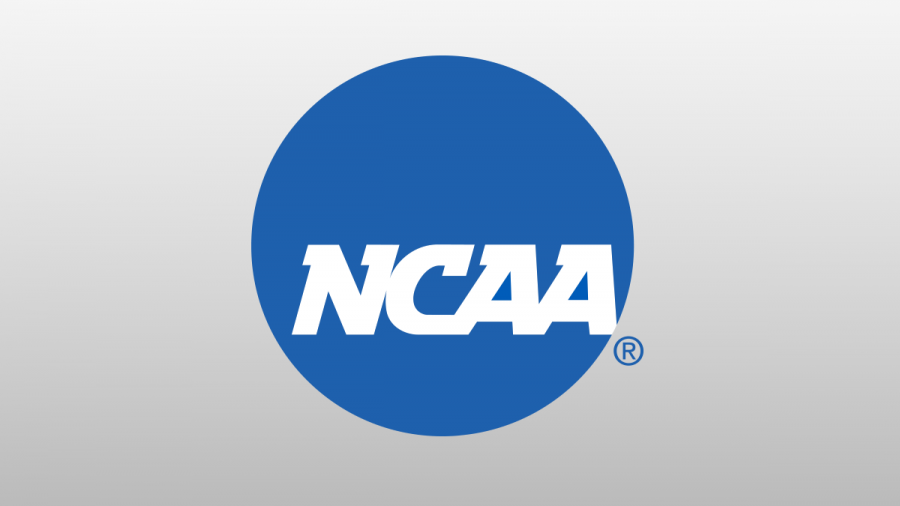NCAA at a crossroads with fall sports
Photo ncaa.com
NCAA logo
On March 12, the NCAA announced the cancelation of the remaining winter and spring athletic championships amid COVID-19.
At the start of the shutdown, many schools and athletes were devastated by the loss of championship season. Freshman basketball player Deng Adiang at the University of Vermont called the end of his winter season “heartbreaking.” Adiang and the Vermont freshman team were about to play the conference semifinals before the season ended abruptly.
With the end of the COVID-19 pandemic unpredictable, so too is a possible date for student-athletes to return to their respective campuses for the start of the fall semester.
Washington University freshman cross country runner James McCutcheon said, “[We] try to focus on the positives; you’re healthy, you’re safe, all those things… but we don’t know what the situation is going to be in the fall.”
Many athletic programs have lost hundreds of millions of dollars as of now, and those numbers could grow as decisions are made about whether or not students can return to campuses this fall. The fall athletic season, particularly college football, is one of the most profitable seasons for the NCAA and the threat of a lost fall is forming a dark cloud over many universities.
Various cost-cuts have already been made by some schools to try to save money for the future. The University of Cincinnati cut its men’s soccer program. Furman University shut down its men’s lacrosse and baseball teams as well. Athletic Directors have also begun refunding tickets and student fees for the spring semester, as well as implementing hiring freezes, layoffs and pay cuts, even for the most high-profile of coaches, such as Dabo Swinney of Clemson whose annual salary is $9.3 million and Nick Saban of Alabama whose annual salary is $8.85 million.
With all of these issues and uncertainties, athletes and the NCAA alike are itching to get back to competition. Freshman heptathlete at The University of Vermont and WHS alumni Lauren Triarsi said, “I think that’s the biggest moral dilemma, with the whole [quarantine] because no one wants to get sick, but people are losing money and that’s also a huge issue.” Triarsi went on to say that quarantine can only last until economic issues become just as prevalent. Eventually, schools are going to need to bring in money again and life needs to return to normalcy.
While every university in the country will be affected by the potential loss of a fall season due to COVID-19, the situation could prove to be even worse for powerhouse programs. A recent article from Forbes reports that between $400 million and $1 billion are at stake for the Power Five Conferences (a group of 65 universities that includes the Big10, Big12, PAC12, SEC, and ACC). At an average of more than $78 million in revenue per Power 5 schools, those athletic funds account for more than 60 percent of most of the schools’ annual capital gain.
However, mid-major teams might also be in jeopardy if college football is played in a socially distanced capacity. In an interview with Hi’s Eye former Villanova soccer coach and current athletic director at Governor Livingston High School Ann Clifton said, “Penn State football is still going to get to play, they’re going to get their television revenue and all that stuff. A school like Susquehanna University won’t be able to, so I just hope this won’t be a great divide in our athletics.”
The NCAA plans to start bringing athletes back to campus on June 1; however, every school is approaching this a little differently. According to ESPN, the University of Oklahoma is planning to allow football players back on campus July 1 for optional workouts while Clemson University is allowing football and basketball players back on campus as early as June 8.
Former Duke cross country runner and WHS alumni Matt Luppino said, “What’s going on in Durham, North Carolina is very different from what’s going on at Northern Arizona, very different from what’s happening in Oregon, very different from what’s happening in New York City.”
Every school is different in what they need to do to protect themselves against COVID-19 based on their geographic location. This makes it challenging to compete and for the NCAA to make decisions. Regionally, the nation is simply too different to have a one size fits all reopening plan. Triarsi said, “I know that I’m in one of the states with the highest [COVID-19] infection rates. But Vermont has a much lower infection rate.”
The implications of COVID-19 on the NCAA could end up being catastrophic for athletes and schools in so many different ways but at this point in time, there is simply too much uncertainty to know for sure. The hope is that fall sports will be in full swing this year, but there are many moving parts that need to be put in place before college sports can resume.

